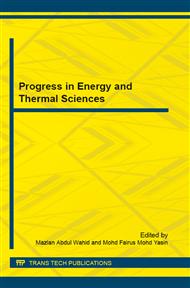p.242
p.246
p.250
p.254
p.272
p.276
p.281
p.287
p.291
Cyclic Steam Stimulation Effect on Skin Factor Reviewed Case Study
Abstract:
High oil viscosity is a major concern for recovery from heavy oil reservoir. Introducing heat to the formation has proven to be an effective way to improve mobility. The Heat transfer to the oil and reservoir rock is good for thermal recovery. The thermal recovery involves a well-known technique of cyclic steam stimulation which actually effect the nearby well area. Heavy oil reservoir which uses the thermal technique will experience the change of property. Fula North East (FNE) Sudanese field is located in the north-eastern part of Fula sub-basin. According to the development program of FNE, Bentiu layer (of Bentiu group) is the targeted reservoir where the pressure gradient is 285.65 psi/100m, perforation intervals is 540-533 m, and the average oil production rate of single well by applying the cyclic steam stimulation (CSS) is 236 bbl/d. For well- Q, (one of the hot wells) to void the bottom water the average production rate is 191 bbl/d. A minor change is observed in the key properties of the well when the skin affect is varied.
Info:
Periodical:
Pages:
287-290
Citation:
Online since:
January 2016
Authors:
Price:
Сopyright:
© 2016 Trans Tech Publications Ltd. All Rights Reserved
Share:
Citation:


